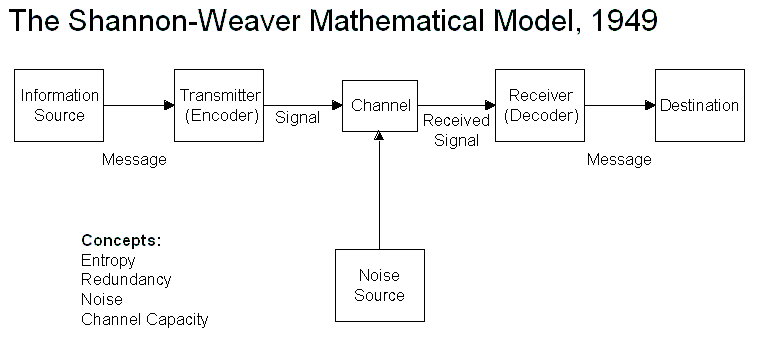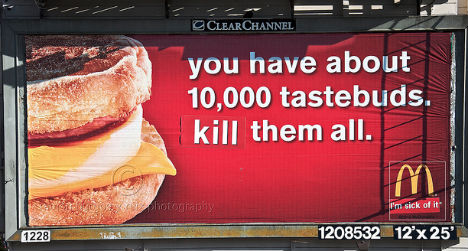
DIAGRAM CONTEXT
In 1948, Shannon was an American mathematician, Electronic engineer and Weaver was an American scientist both of them join together to write an article in “Bell System Technical Journal” called “A Mathematical Theory of Communication” and also called as “Shannon-Weaver model of communication”.
This model is specially designed to develop the effective communication between sender and receiver. Also they find factors which affecting the communication process called “Noise”. At first the model was developed to improve the Technical communication. Later it’s widely applied in the field of Communication.
The model deals with various concepts like Information source, transmitter, Noise, channel, message, receiver, channel, information destination, encode and decode.
Often when design is miscommunicated its because it has been 'encoded' incorrectly.
After reviewing the diagram we were asked to think about how it could be applied in graphic design. The idea is that the design communication process can be broken down into five stages.
Information Source - The client or Brief.
Transmitter (encoder) - The designer.
Channel - The product/outcome.
Receiver (decoder) - Anyone who sees the product/outcome.
Destination - The target audience.
Noise;
'Anything unintended that causes a break-down of communication between the transmitter and receiver'
Next, we were tasked with thinking of how 'noise' could occur at each stage of the communication process;
Information Source - If the designer misunderstood the brief.
Transmitter (encoder) - Wrong method of communication used.
Channel - If the product is produced incorrectly.
Receiver (decoder) - Product not properly distributed or hidden from view of audience.
Destination - Miscommunication of the message/incorrect form, relates to all other stages.
Communication Problems;
Level A - Technical problems. How accurately can the message be communicated?
Level B - Semantic Problems. How precisely is the message conveyed?
Level C - Effectiveness Problems. How effectively does the received meaning effect behavior?
Communication problems within design are easier to define when the project is broken down and applied to the communication model.
Examples of culture jamming are a modern visual example of noise affecting communication. Graffiti adaptations of advertisements take viewer focus away from the intended message and direct it towards a more meaningful thought path.

One difference between the diagram and the actual communication of work is that we usually receive feedback on work, this helps us to see and overcome possible problems with the communication of a product/outcome. For the Shannon & Weaver model to be a true representative of communication within design it would need a loop representing feedback.
REDUNDANCY & ENTROPHY
Redundancy - 'The path of least resistance'
Entropy - 'The moment of bleeding out of that channel'
Offering your hand as a gesture for a handshake is a good example of communication redundancy, to the majority of society it is an understandable and predictable action. However, if you held a buzzer in your hand and shocked the recipient it would be unexpected and would cause a reaction. The reaction in turn would cause the recipient
Redundancy also relates to semiotics.
Graphic design usually aims for redundancy as the messages communicated often need to be effectively delivered in an understandable way.
Fine artists usually aim for Entropy as their pieces often aim to evoke a deep analytical thought process.When a visual communicator works redundantly nothing changes, as they re-use well known semiotic symbols. Working with known symbols helps the work achieve redundancy as the audience can instantly relate to the information communicated.

No comments:
Post a Comment